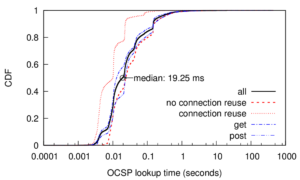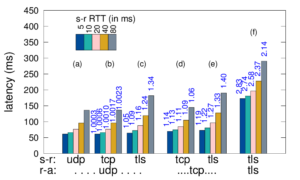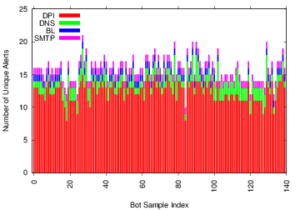The paper “Towards Characterizing International Routing Detours” appeared in the 12th Asian Internet Engineering Conference on Dec 1, 2016 in Bangkok, Thailand and is available at http://dl.acm.org/citation.cfm?id=3012698. The datasets are available at http://geoinfo.bgpmon.io.
From the abstract:
There are currently no requirements (technical or otherwise) that routing paths must be contained within national boundaries. Indeed, some paths experience international detours, i.e., originate in one country, cross international boundaries and return to the same country. In most cases these are sensible traffic engineering or peering decisions at ISPs that serve multiple countries. In some cases such detours may be suspicious. Characterizing international detours is useful to a number of players: (a) network engineers trying to diagnose persistent problems, (b) policy makers aiming at adhering to certain national communication policies, (c) entrepreneurs looking for opportunities to deploy new networks, or (d) privacy-conscious states trying to minimize the amount of internal communication traversing different jurisdictions.
In this paper we characterize international detours in the Internet during the month of January 2016. To detect detours we sample BGP RIBs every 8 hours from 461 RouteViews and RIPE RIS peers spanning 30 countries. We use geolocation of ASes which geolocates each BGP prefix announced by each AS, mapping its presence at IXPs and geolocation infrastructure IPs. Finally, we analyze each global BGP RIB entry looking for detours. Our analysis shows more than 5K unique BGP prefixes experienced a detour. 132 prefixes experienced more than 50% of the detours. We observe about 544K detours. Detours either last for a few days or persist the entire month. Out of all the detours, more than 90% were transient detours that lasted for 72 hours or less. We also show different countries experience different characteristics of detours.
This work won the Best Paper Award at AINTEC 2016. APNIC blog post on this paper can be found here.
The work in this paper is by Anant Shah, Christos Papadopoulos (Colorado State University) and Romain Fontugne (Internet Initiative Japan).




![How newtork activity generates DNS backscatter that is visible at authority servers. (Figure 1 from [Fukuda15a]).](http://ant.isi.edu/blog/wp-content/uploads/2015/09/Fukuda15a_icon-300x190.png)



![Predicting longitude from observed diurnal phase ([Quan14c], figure 14c)](http://ant.isi.edu/blog/wp-content/uploads/2014/10/Quan14c_icon-300x175.png)